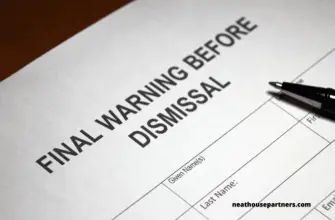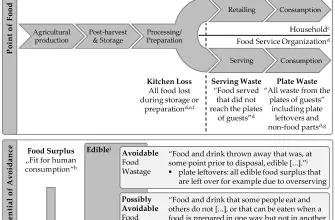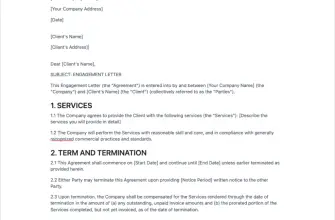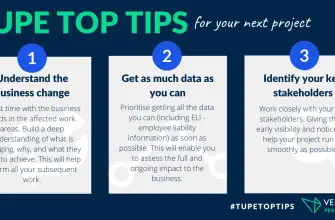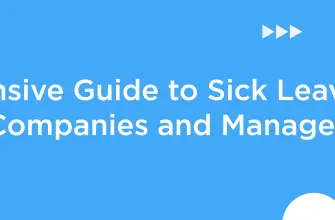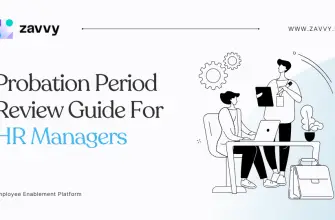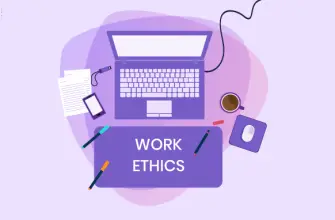Learn about the rules and procedures of Employment tribunal rules, including how to file a claim and what to expect during the process.
Employment Tribunals could be extremely helpful in resolving disputes between an employer and their employees. These disputes could range from unreasonable reductions in wages to unfair dismissals.
You are at the right place if you are trying to understand their rules and procedures. A minor gist of them is as follows;
- At first, the claimant has to start a claim using an officially prescribed form.
- After that, the defendant must also do the same by responding through a prescribed form.
- Once these steps are completed, both parties must provide enough information to back their claims up.
- Then, the case management scans the allegations and information, and the dispute is resolved after multiple hearings.
In the United Kingdom, Employment Tribunals are there in England, Scotland, and Wales, but all of their claims must be in the same region as the proceedings. Further ahead, you will learn in detail about the Employment Tribunals’ rules of procedure and their jurisdictions. So, stick around.
What Are Employment Tribunals In The UK?

Before understanding the Employment Tribunals, we need to know what tribunals themselves are. Tribunals could be any institutions or people who resolve disputes and have the authority to adjudicate certain disputes about claims.
Employment Tribunals are the industrial tribunals responsible for resolving conflicts and disputes between an employer and their employees. Specifically, they fall under governmental institutions in the UK and follow specific rules according to the legislation.
If an employee has a claim against their employer regarding their dismissal or unfair wages, they can file a claim in this tribunal and go through a process to resolve their issue.
Employment Tribunals Rules Of Procedure
Employment Tribunals are government institutions in this era, and they must follow legislative rules for all their procedures. There are rules in those procedures that are mandatory to pass a judgment preserving the walls of justice. These rules of procedure for an employment tribunal, specifically in the UK, are as follows;
1. Filing In the Claim:
The first step is to file a claim. In this step, the claimant has to follow some rules to complete the start of the claim. The first is to file the claim through a properly prescribed form on the official judiciary website or through physical centres all over the UK.
These must be filled adequately and equipped with all the minimum necessary information required. In some cases, there could be multiple claimants; in this case, they can file a claim in the same prescribed form. But, if the claims differ, it could be a reason to get rejected.
Other reasons for the rejected claim could include not providing enough information, not using the tribunal fee, or having defects in the claim, like being out of jurisdiction, etc.
2. Getting a Response To The Claim:
Once all the procedures for starting a claim have been completed, the respondent is sent a copy of the claim form and a prescribed response form. The respondent then has to send their response in time to the tribunal.
In some cases, the claim could lead to multiple respondents if the claim involves various respondents. It could include laws or facts which could lead to the resolution of the dispute. These responses can be on a single response form.
The response can also be rejected if it is not submitted in time. In some cases, it could also lead to the conclusion of a suit based on the information available. But, an application for a time extension can also be given to push the deadline.
3. Employer’s Contract Claim:
Like an employee claim, an employer can also file a contract claim. But, it is somewhat different than others in it. In this contract claim, the employer has considered a respondent and the employee a claimant, even though it is a contract claim.
It is filed if, in some cases, the employee has done something unfair that could damage the employer. The rules applied to this claim are the same as ordinary claims filed by employees.
4. Initial Consideration:
After accepting the claims and responses, the jury and the authorities must analyse the information, determine whether the claim is valid, and need hearings. For that, an initial consideration is required.
The consideration includes checking for jurisdiction grounds to see whether the claim is valid regarding the jurisdiction or not. Also, the timings of the claim and response fall under the initial consideration. So, any late turn-ins could result in dismissing the claim or response.
5. Case Management Orders:
Case management orders are a set of orders that are optional and can be used for the claimant or respondent’s defence. These orders could include disclosure of documents, loss setbacks, etc. Case management orders cover all these things.
An application can be filed for these orders to be imposed on the hearing or the proceeding; it is up to the person requesting an order.
6. Rules For Hearings:
Specific rules are standard for all hearings, whether these hearings are preliminary or final. These rules are pretty open, and almost everyone knows about them. They include written representation, presence of witnesses, checking witness statements, conversion from preliminary to final, etc.
A written representation is something a claimant or respondent must turn to the authorities under seven days before the hearing. This allows them to be absent from the hearing under severe circumstances.
Witnesses must be there to give the information that could be used in the claimant or respondent’s case. Also, a preliminary hearing can turn into a final hearing if the information reinforces one party and have no way to be faltered.
7. Withdrawal:
A claimant can withdraw their claim midway as well. The ways to do so include announcing during a hearing or sending a written withdrawal. This works if the claimant informs a part of the claim to be withdrawn, and then the whole claim ends.
This withdrawal could result from information non-availability or other reasons such as time delay, etc. There is another scenario where a claim can be withdrawn. This is the case if the jury thinks the conclusion of the claim will not favour justice; they advise the claimant to withdraw the claim.
8. Initial Hearings:
The goal of the initial hearings is to determine whether the case can be resolved in the preliminary rounds or not. Here, alternative ways are discussed. Also, initial consideration can be done as well to see if the claim is valid or not.
Preliminary hearings can be multiple depending on the complexity of the case. If the initial issue can be resolved in one hearing, there is only one hearing, but in most cases, there are multiple hearings to determine the initial background and foundation of the dispute. Also, all these preliminary hearings will be held publicly except under exceptional cases under the legislation.
9. Final Hearing:
A final hearing is the last hearing of any part of the dispute where a conclusion is to be given for the passed claim. Different claim issues can have different preliminary and final hearings depending on the need.
The employment tribunal’s responsibilities are to send a notice to both the parties, the claimant and the respondent, 14 days before the final hearing. This gives them time to prepare themselves mentally for the conclusion. Also, all the final hearings are to be held in public except for any exceptional cases, as stated before in the preliminary hearings.
10. Conclusion And Decisions:
After all the proceedings and hearings, the jury takes time to re-analyze the shreds of evidence, information, and the claim to conclude the case. The conclusion results in a decision that is then to be accepted by both parties.
The decision can sometimes be made without a hearing because the information and evidence are enough to conclude the case. A written copy of the decisions is delivered to the claimant and respondent. Reasons for the decisions are given in the manuscript, and resolving any dispute can not be challenged.
Employment Tribunal Waiting Times 2025

Over the past years of the employment tribunals, it has been seen that the waiting time for a claim has constantly risen to upper levels. This is because, with time, people are getting more and more aware of this institution and also due to the increasing claim count.
As of the 2021 release of the Ministry of Justice, the latest one, it takes about 49 weeks for a single claim to get to its first hearing. This means it takes almost a year for your claim to get started processing. It is the same for 2025.
This is annoying because people need more time to wait for their cases. So, people also withdraw their claims due to this very reason. But the choice is entirely up to you in your case.
All this massive increase in waiting time is due to the global pandemic of COVID-19. This pandemic pushed the whole world back. The waiting times of the employment tribunals were disturbed because of all the preventive measures in place. Though, the time has not been reduced for waiting.
Employment Tribunal Decisions
Employment Tribunal decisions are the conclusion of the claims or cases, whether in favour of the claimant or respondent. These decisions are for the related parties to find out the result of the suit. A copy of these decisions is sent to both parties at the end.
These decisions can be found on the official website of the government of the UK, and you can also select your region. There will be reasons available for those decisions as well. These reasons are well-detailed for the involved parties to understand.
What regulation governs the employment tribunal?
The employment tribunals in the UK have to follow a particular set of rules that govern them. These rules fall under Schedule 1 of the Employment Tribunals Regulations 2013.
All the laws and regulations in this schedule are according to the legislation of the UK. So, following them is a must in all the procedures of Employment Tribunals.
What is Rule 21 in the employment tribunal?
Rule 21 of the employment tribunal covers the possibility that the claim filed has not received a response from the other party.
If this is the case, this rule gives the judge the authority to conclude the whole suit or a part of it, considering all the available information. This rule is not applied if a response is received before its first implementation.
What happens at an employment tribunal?
At an employment tribunal, different disputes and conflicts that are industry related and are between the employer and their employees are resolved.
The responsibilities of the employment tribunal include analyzing the information of both the suiter and the respondent. Considering all the evidence, the case is concluded by the jury of the employment tribunal.
What should I do if I want to take my employer to an employment tribunal?
Before going to the employment tribunal, consult with your UNISON representative. If that does not work out for you, you should find an alternate way to resolve the issue by going to ACAS(Advisory, Conciliation, and Arbitration Service).
Even if that does not work out for you, you could go to an employment tribunal and file a claim through a prescribed form.
Final Thoughts
Employment Tribunals help resolve industrial employer and employee disputes. But do remember that tribunals are not always the correct answer. You should find an alternative way to resolve the issue so you do not give birth to grudges in the minds of each other.
If you decide to go to the Employment Tribunal, you should know about the rules of procedures of the tribunals of your region. In the UK, all these rules follow the legislation, so understanding and acting on them is necessary to get your claim through the procedure.
Equipping you with the knowledge of those rules of employment tribunals is the sole purpose of this article. If you still have any questions, you can reach out to me. Till then, signing off.


